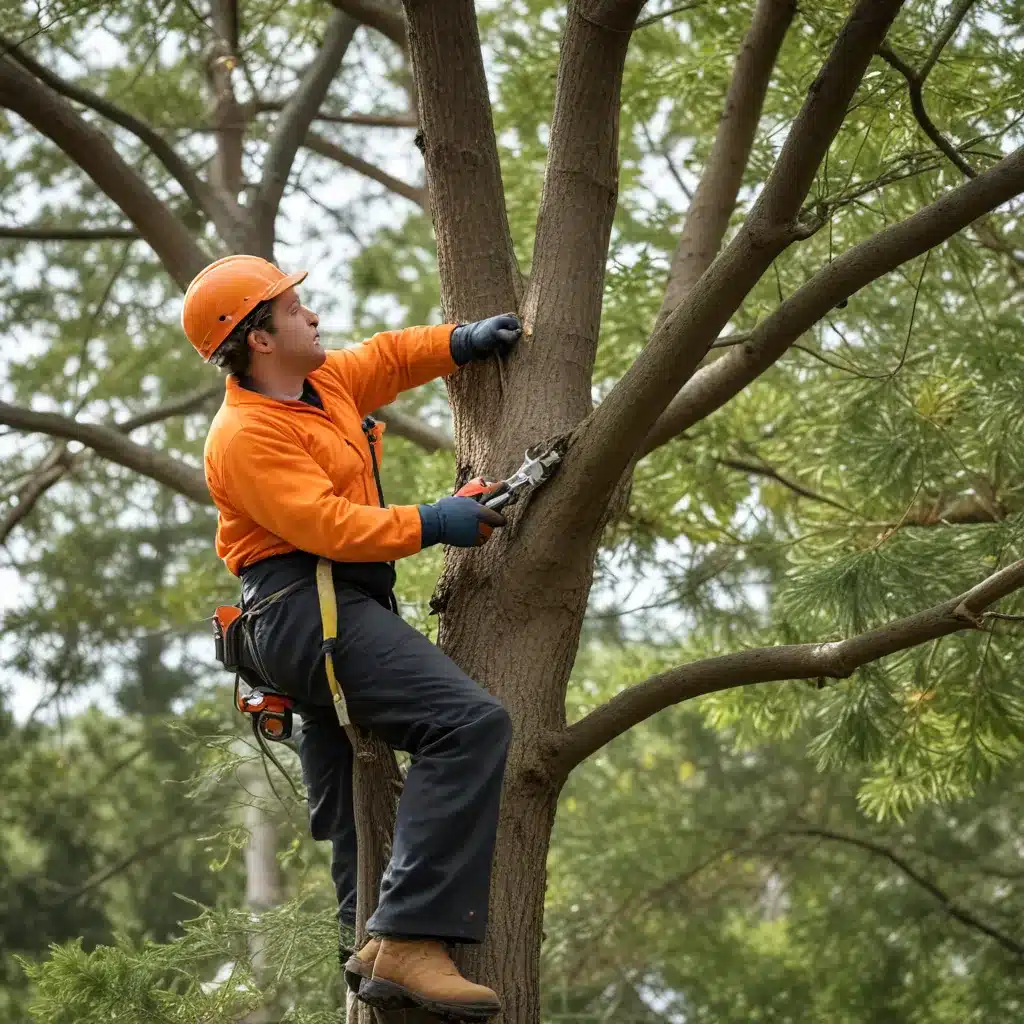
As a tree care specialist at TriCounty Tree Care, I’ve had the privilege of witnessing the profound impact that thoughtful, adaptive tree management can have on the health and vitality of our local landscapes. In an era marked by environmental volatility and evolving pest pressures, embracing innovative seasonal techniques is paramount to ensuring the longevity and ecological benefits of our community’s cherished trees.
Seasonal Considerations
Spring Preparations
The transition into spring signifies a period of renewed growth and vigor for deciduous trees. As buds swell and new foliage emerges, it’s an opportune time to assess the structural integrity of your trees and address any potential issues. Proper pruning techniques, guided by an arborist’s expertise, can optimize branch architecture, remove damaged or diseased wood, and promote the overall health of the tree.
Additionally, this is a critical window for soil amendment and nutrient replenishment. By incorporating organic matter and targeted fertilizers, you can fortify the root zone and ensure your trees have the necessary resources to thrive through the growing season. Timely attention to these foundational elements lays the groundwork for a season of vibrant, resilient growth.
Summer Maintenance
As the heat of summer intensifies, maintaining adequate moisture levels becomes a paramount concern. Regular, deep watering – tailored to the unique needs of each species – can help prevent drought stress and bolster the tree’s natural defenses against pests and pathogens. Mulching around the base can also aid in moisture retention and suppress competing vegetation.
Vigilant monitoring for insect infestations and disease is another critical summer task. Proactive identification and treatment of issues, in collaboration with your local arborist, can arrest the spread and safeguard the overall health of your trees. This may involve the judicious use of integrated pest management (IPM) strategies, combining cultural, biological, and, when necessary, targeted chemical controls.
Fall Cleanup
As autumn approaches, trees begin the process of dormancy and shedding foliage. This is an opportune time to conduct a comprehensive assessment of your trees and prepare them for the winter ahead. Removing fallen leaves and debris from around the base can minimize the risk of disease and rodent activity, while also allowing for better air circulation.
Careful pruning of dead, damaged, or structurally unsound branches can mitigate the potential for storm damage during the winter months. An arborist’s trained eye can identify areas of concern and implement strategic pruning techniques to bolster the tree’s resilience.
Challenges in Tree Care
Environmental Factors
The increasingly unpredictable nature of our climate presents a significant challenge for tree care specialists. Fluctuations in temperature, precipitation patterns, and the frequency of extreme weather events can strain the adaptive capacities of our urban and suburban trees. Vigilant monitoring, proactive planning, and the strategic use of drought-tolerant species and resilient cultivars are essential to ensuring the long-term vitality of our tree canopy.
Pest and Disease Management
Changing environmental conditions have also contributed to the proliferation of new pests and the spread of invasive pathogens. From the devastating emerald ash borer to the insidious oak wilt, arborists must stay informed on the latest research and employ a range of integrated pest management (IPM) strategies to safeguard our trees. This may involve the judicious use of targeted pesticides, the deployment of biological controls, and the promotion of overall tree health to bolster natural defenses.
Pruning Techniques
Proper pruning is a cornerstone of effective tree care, but it requires a delicate balance of scientific knowledge and practical skill. Arborists must be well-versed in the growth habits and physiological responses of different tree species, as well as the appropriate techniques for addressing structural issues, removing deadwood, and promoting healthy branching patterns. Failure to execute pruning with precision can lead to long-term damage or even tree mortality.
Embracing Innovations
Sustainable Practices
In an era of heightened environmental awareness, tree care specialists are embracing a more holistic, ecologically-minded approach. This may involve the use of organic fertilizers, the incorporation of native plant species into landscape designs, and the implementation of water-conserving irrigation systems. By aligning our practices with the principles of sustainability, we can enhance the overall resilience of our urban and suburban tree canopies while minimizing our environmental footprint.
Technological Advancements
The field of arboriculture has also witnessed a surge of technological innovations, providing tree care professionals with unprecedented tools for monitoring, diagnosis, and treatment. From remote sensing and drone-based imagery to advanced soil analysis and predictive disease modeling, these cutting-edge solutions enable us to make more informed, data-driven decisions that optimize the health and longevity of our trees.
Community Engagement
Recognizing the vital role that trees play in shaping the character and livability of our communities, tree care specialists are increasingly engaging with local stakeholders to foster a shared sense of stewardship. This may involve educational outreach, volunteer tree-planting initiatives, and the development of comprehensive urban forestry management plans. By empowering residents to become active participants in the care and preservation of their local tree resources, we can cultivate a deeper appreciation for the ecological, economic, and social benefits that a thriving urban canopy provides.
At TriCounty Tree Care, we are committed to embracing the challenges and opportunities that define the ever-evolving world of arboriculture. By blending time-honored techniques with innovative, science-based approaches, we strive to safeguard the health and vitality of our community’s trees, ensuring they continue to enrich our lives and sustain the delicate balance of our local ecosystems. Whether you’re a homeowner, a municipal planner, or a fellow tree enthusiast, we invite you to visit our website and explore the wealth of resources and services we offer to support your tree care needs.


